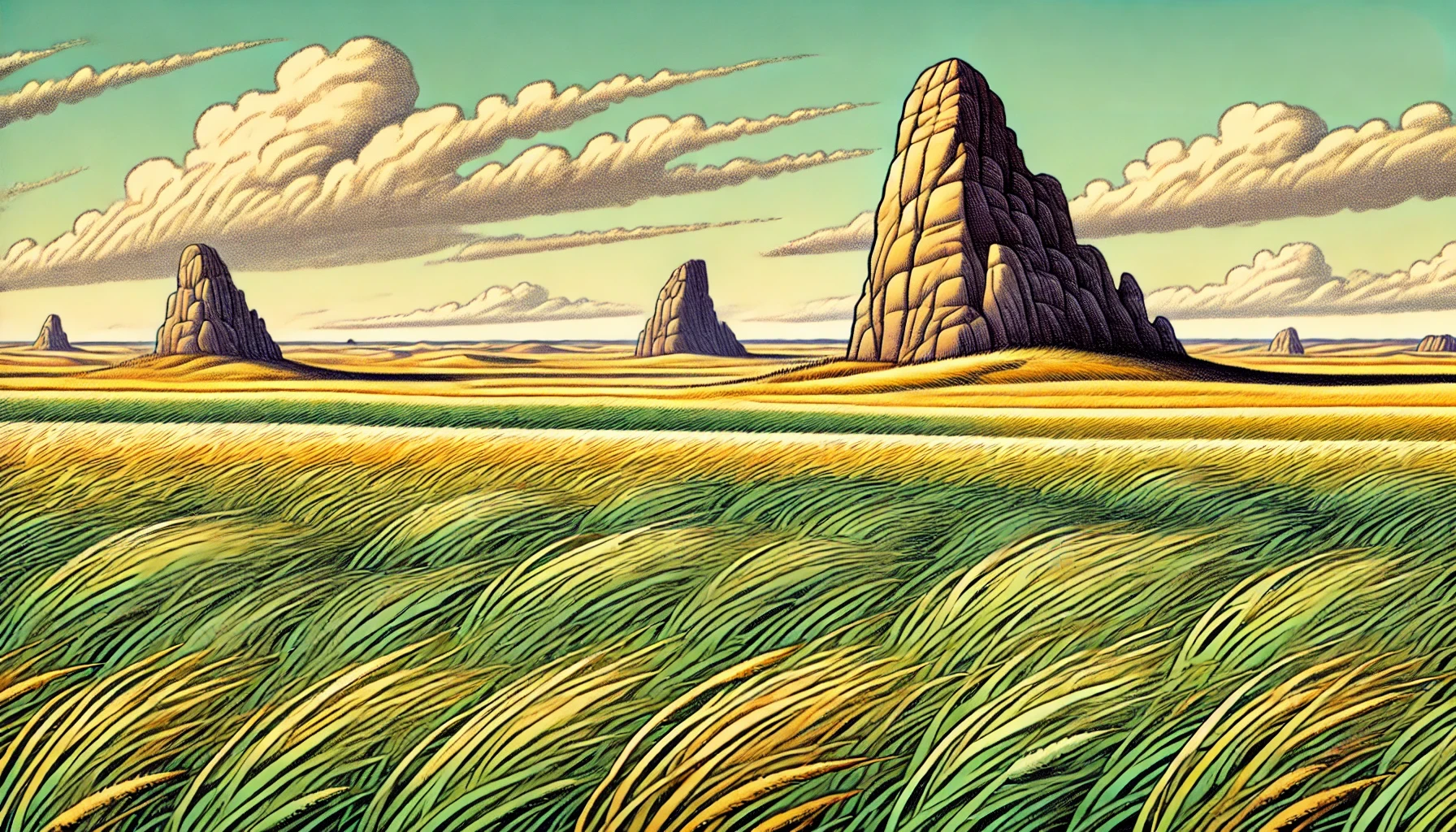Rainshadow Effect in Nebraska's Landscape

As one travels through Nebraska, from the rolling sandhills to the Great Plains, a peculiar phenomenon becomes apparent - a stark contrast between lush, verdant forests on one side of a mountain range and arid, desert-like landscapes on the other. This discrepancy in climate and vegetation is known as the rainshadow effect. In this article, we will explore the intricacies of the rainshadow effect and how it impacts Nebraska's ecosystem.
The rainshadow effect occurs when prevailing winds drop most of their moisture on the windward side of a mountain range, resulting in a significant decrease in precipitation on the leeward side. This effect is evident in Nebraska, where the Rocky Mountains to the west block moisture-laden air from reaching the eastern part of the state. The Laramie Mountains, specifically, create a rainshadow that casts a dry spell on the eastern side, resulting in some of the driest regions in the state.
One prominent example of the rainshadow effect in Nebraska is the stark contrast between the lush forests of the Sandhills and the arid landscapes of the Panhandle. The Sandhills, situated in north-central Nebraska, receive ample rainfall from the prevailing westerly winds. Conversely, the Panhandle, nestled in the rainshadow of the Laramie Mountains, is plagued by dry conditions, receiving less than 18 inches of rainfall per year. This disparity in precipitation has a profound impact on the local flora and fauna.
The rainshadow effect also influences the local climate. The leeward side of the mountain range experiences drier and sunnier conditions, resulting in extreme temperature fluctuations. Moreover, the dry air on the leeward side leads to increased evaporation, further exacerbating the arid conditions. The effects of this can be seen in the Scott's Bluff National Monument, where the combination of low precipitation and high evaporation has resulted in the formation of unique sandstone formations.
Nebraska's rainshadow-laden landscape also has significant implications for local wildlife. The variability in climate and vegetation has created diverse ecosystems, supporting a wide range of species. For instance, the bighorn sheep and mule deer that inhabit the dry, rocky outcroppings of the Laramie Mountains are uniquely adapted to the arid conditions of the rainshadow region. Conversely, the lush forests of the Sandhills provide a habitat for a distinct set of species, including the white-tailed deer and the greater prairie chicken.
In addition to influencing local wildlife, the rainshadow effect has significant implications for agriculture. Farmers in the leeward regions must contend with arid conditions, limited water supply, and temperature fluctuations. As a result, they have developed unique farming techniques, such as dryland farming and crop rotation, to mitigate these challenges. This resilience can be witnessed in the small towns of western Nebraska, such as Scottsbluff and Gering, which have developed around the state's agricultural industry.
As we continue to explore Nebraska's diverse ecosystems, it is essential to recognize the profound impact of the rainshadow effect on the region. The intricate relationships between climate, vegetation, and wildlife that arise from this phenomenon create a complex tapestry, challenging our understanding of the natural world. As we delve deeper into this fascinating subject, we may uncover even more nuances of the rainshadow effect.
The rainshadow effect serves as a counterintuitive reminder that even seemingly minor variations in geography can have profound consequences for the local environment. Nebraska's unique landscape is an extraordinary example of this phenomenon, where small changes in elevation and wind direction result in vast variability.
The variability of ecosystems influenced by the rainshadow effect showcases the incredible adaptation of natural systems to local conditions.
The rainshadow effect occurs when prevailing winds drop most of their moisture on the windward side of a mountain range, resulting in a significant decrease in precipitation on the leeward side. This effect is evident in Nebraska, where the Rocky Mountains to the west block moisture-laden air from reaching the eastern part of the state. The Laramie Mountains, specifically, create a rainshadow that casts a dry spell on the eastern side, resulting in some of the driest regions in the state.
One prominent example of the rainshadow effect in Nebraska is the stark contrast between the lush forests of the Sandhills and the arid landscapes of the Panhandle. The Sandhills, situated in north-central Nebraska, receive ample rainfall from the prevailing westerly winds. Conversely, the Panhandle, nestled in the rainshadow of the Laramie Mountains, is plagued by dry conditions, receiving less than 18 inches of rainfall per year. This disparity in precipitation has a profound impact on the local flora and fauna.
The rainshadow effect also influences the local climate. The leeward side of the mountain range experiences drier and sunnier conditions, resulting in extreme temperature fluctuations. Moreover, the dry air on the leeward side leads to increased evaporation, further exacerbating the arid conditions. The effects of this can be seen in the Scott's Bluff National Monument, where the combination of low precipitation and high evaporation has resulted in the formation of unique sandstone formations.
Nebraska's rainshadow-laden landscape also has significant implications for local wildlife. The variability in climate and vegetation has created diverse ecosystems, supporting a wide range of species. For instance, the bighorn sheep and mule deer that inhabit the dry, rocky outcroppings of the Laramie Mountains are uniquely adapted to the arid conditions of the rainshadow region. Conversely, the lush forests of the Sandhills provide a habitat for a distinct set of species, including the white-tailed deer and the greater prairie chicken.
In addition to influencing local wildlife, the rainshadow effect has significant implications for agriculture. Farmers in the leeward regions must contend with arid conditions, limited water supply, and temperature fluctuations. As a result, they have developed unique farming techniques, such as dryland farming and crop rotation, to mitigate these challenges. This resilience can be witnessed in the small towns of western Nebraska, such as Scottsbluff and Gering, which have developed around the state's agricultural industry.
As we continue to explore Nebraska's diverse ecosystems, it is essential to recognize the profound impact of the rainshadow effect on the region. The intricate relationships between climate, vegetation, and wildlife that arise from this phenomenon create a complex tapestry, challenging our understanding of the natural world. As we delve deeper into this fascinating subject, we may uncover even more nuances of the rainshadow effect.
The rainshadow effect serves as a counterintuitive reminder that even seemingly minor variations in geography can have profound consequences for the local environment. Nebraska's unique landscape is an extraordinary example of this phenomenon, where small changes in elevation and wind direction result in vast variability.
The variability of ecosystems influenced by the rainshadow effect showcases the incredible adaptation of natural systems to local conditions.
